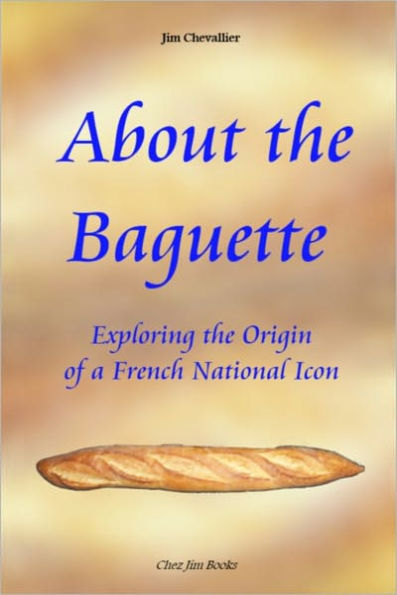Where did the baguette come from? A simple enough question, but this search for an answer ranges from the long breads of Babylon and Egypt to the first long (but wide) breads in France to the gradual evolution of long narrow breads from the eighteenth into the twentieth century, resulting in both the roll-sized "flute" and the gigantic jockos of the nineteenth century. Along the way, the reader will learn more about the fendu, the porteuses de pain, the influence of Viennese baking on French methods and a wide range of shapes and sizes of bread, as well as the most common tales of how the baguette came to be. Adventurous bakers can try one of several period American recipes for making breads that, if not yet baguettes, were very baguette-like. The book also includes looks at how Parisian bakers made their bread, at another type of "baguette" they used and at two of the baguette's cousins.
Whether you are interested in the baguette itself (a surprising number of people are), French baking, nineteenth century Paris or baking history in general, this new look at a classic symbol of France itself has a wealth of discoveries to offer.
1112407341
Whether you are interested in the baguette itself (a surprising number of people are), French baking, nineteenth century Paris or baking history in general, this new look at a classic symbol of France itself has a wealth of discoveries to offer.
About the Baguette: Exploring the Origin of a French National Icon
Where did the baguette come from? A simple enough question, but this search for an answer ranges from the long breads of Babylon and Egypt to the first long (but wide) breads in France to the gradual evolution of long narrow breads from the eighteenth into the twentieth century, resulting in both the roll-sized "flute" and the gigantic jockos of the nineteenth century. Along the way, the reader will learn more about the fendu, the porteuses de pain, the influence of Viennese baking on French methods and a wide range of shapes and sizes of bread, as well as the most common tales of how the baguette came to be. Adventurous bakers can try one of several period American recipes for making breads that, if not yet baguettes, were very baguette-like. The book also includes looks at how Parisian bakers made their bread, at another type of "baguette" they used and at two of the baguette's cousins.
Whether you are interested in the baguette itself (a surprising number of people are), French baking, nineteenth century Paris or baking history in general, this new look at a classic symbol of France itself has a wealth of discoveries to offer.
Whether you are interested in the baguette itself (a surprising number of people are), French baking, nineteenth century Paris or baking history in general, this new look at a classic symbol of France itself has a wealth of discoveries to offer.
2.99
In Stock
5
1

About the Baguette: Exploring the Origin of a French National Icon

About the Baguette: Exploring the Origin of a French National Icon
Related collections and offers
2.99
In Stock

Product Details
| BN ID: | 2940014553292 |
|---|---|
| Publisher: | Chez Jim |
| Publication date: | 04/24/2012 |
| Sold by: | Barnes & Noble |
| Format: | eBook |
| File size: | 5 MB |
About the Author
From the B&N Reads Blog
